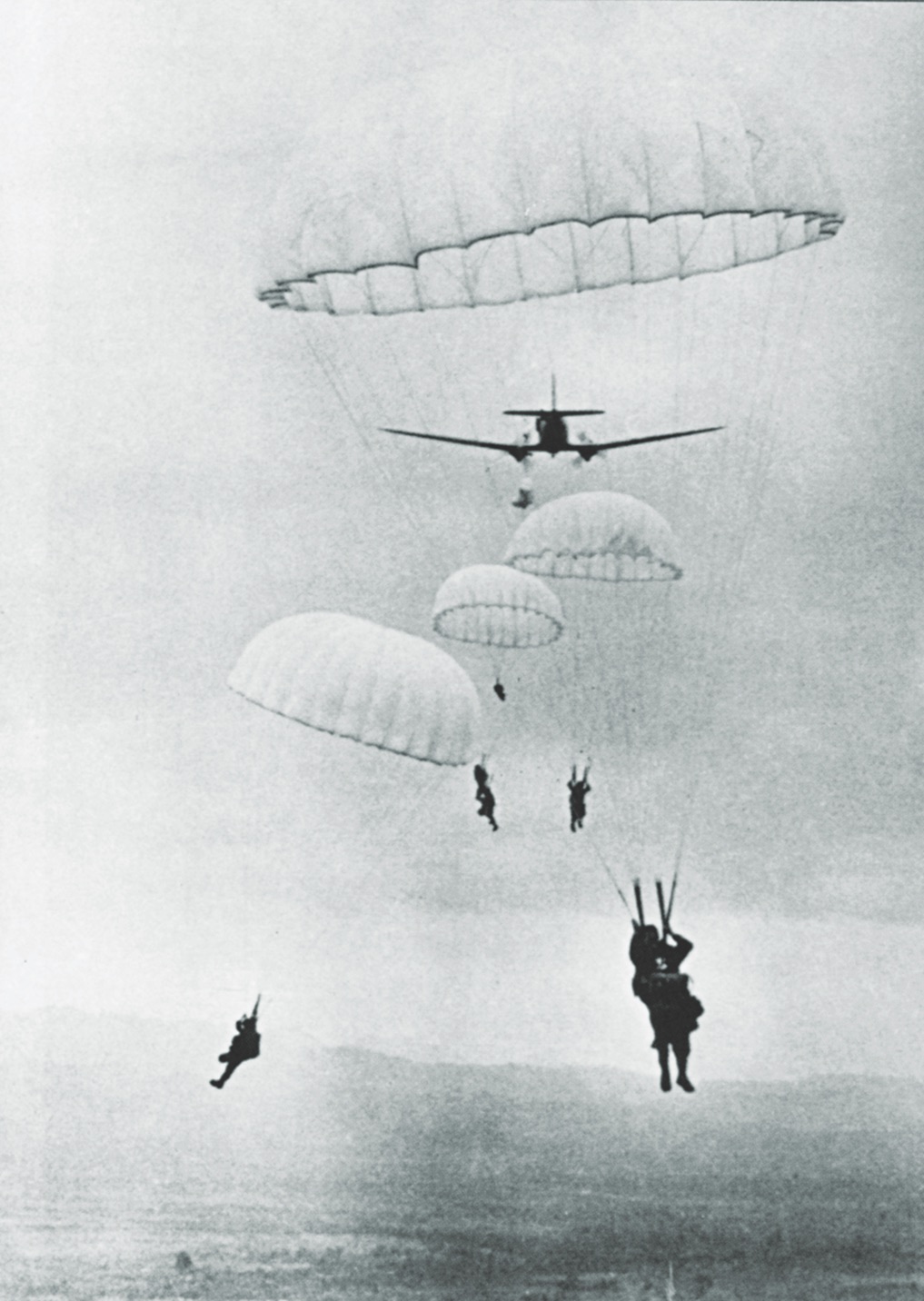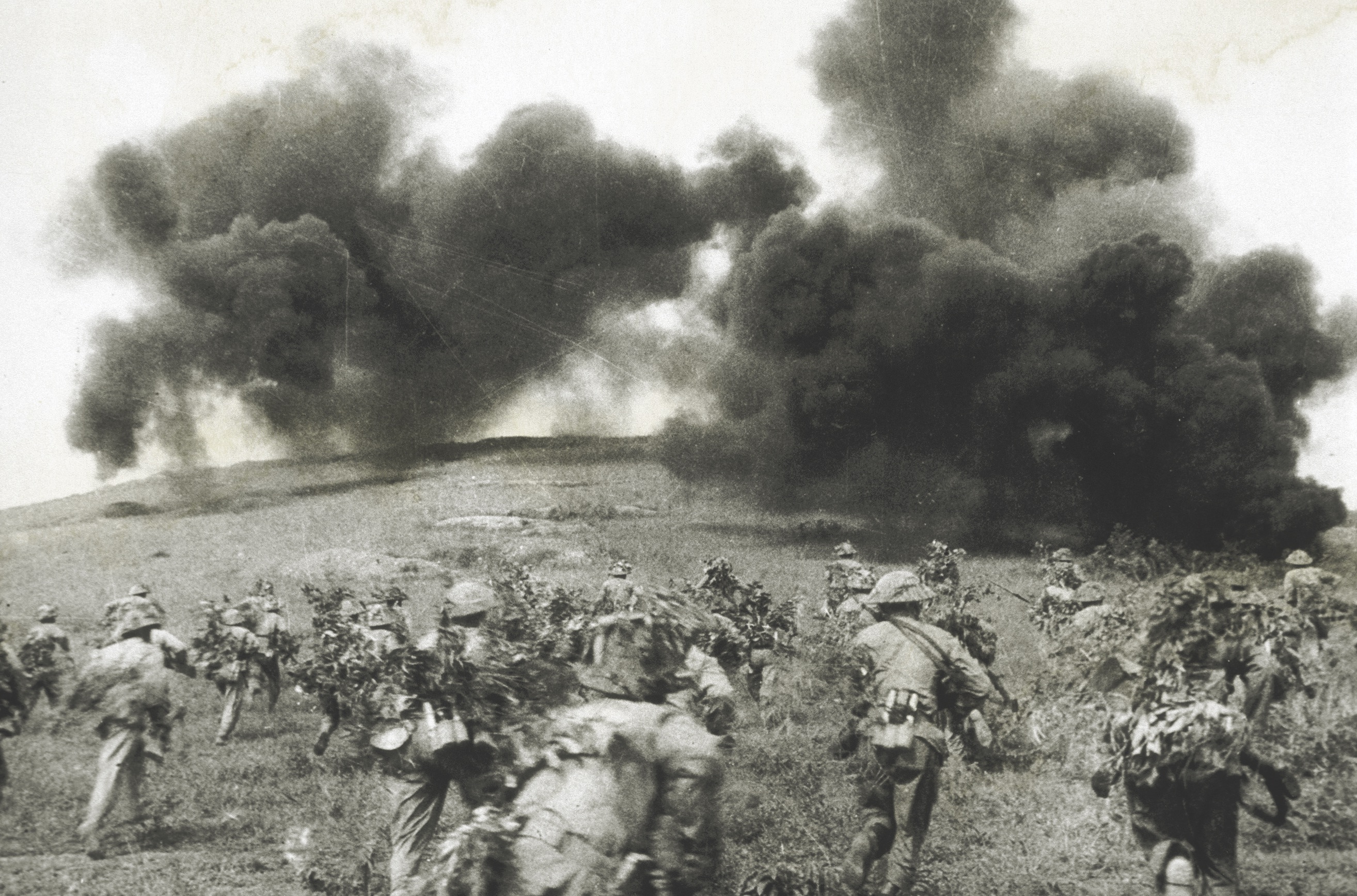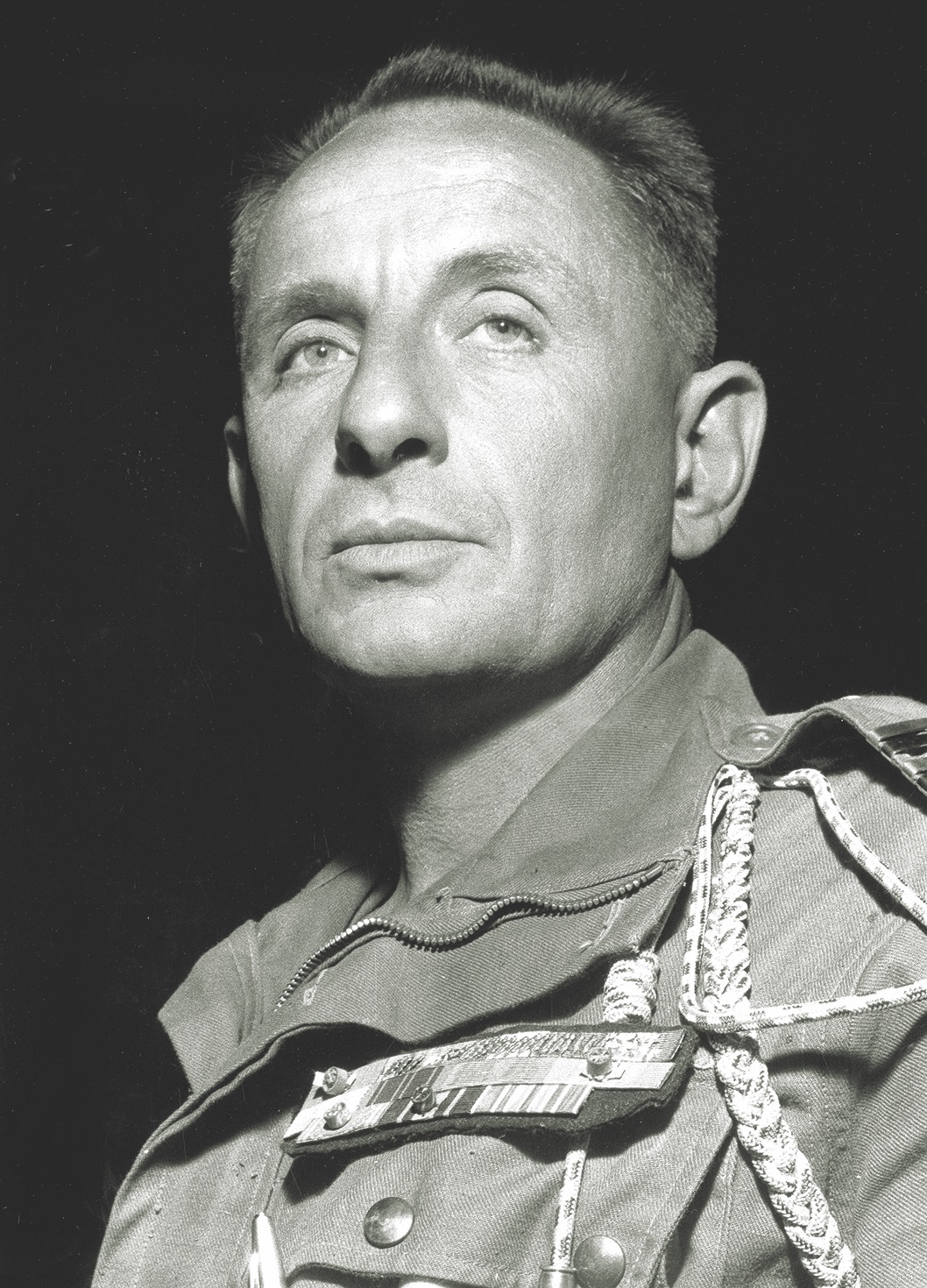Marcel “Bruno” Bigeard was among the greatest soldiers of the 20th century. A legendary paratroop commander in Vietnam and Algeria, he had joined the French army as a peacetime enlistee in 1936. Without benefit of military training at either Brittany’s vaunted Saint-Cyr or the École de guerre in Paris, Bigeard had worked his way up through the ranks. By the time he retired in 1976 as a general de corps d’armée (lieutenant general), he had received more than two-dozen honors from the French government, including the Grand-croix of the Legion d’honneur—the highest grade of his nation’s highest order—seven Croix de guerre for World War II, 17 Croix de guerre for post-1945 overseas operations and five wound medals (the equivalent of the Purple Heart). He also was made a Commander of the Legion of Merit by the United States, received the Distinguished Service Order from Britain and was awarded nine other orders and high decorations from various foreign governments. “I do not accept the medals anymore,” the general reportedly quipped later in life, “because they are starting to fall on my shoes.”
Bigeard was the model for Col. Pierre-Noël Raspéguy, the heroic central character in French writer Jean Lartéguy’s Algerian War novels The Centurions and The Praetorians, a paratroop commander later portrayed by Anthony Quinn in Lost Command, the 1966 film based on The Centurions. The real-life French paratrooper’s personal motto was Si c’est possible, c’est fait; si c’est impossible, ça se fera—If it’s possible, it’s done; if it’s impossible, it will be done.
Bigeard was born into a working-class family on Valentine’s Day 1916. At age 14 he quit school and took a job as a bank clerk to help support his family. Enlisting in the French army in 1936, he served a two-year stint on the Maginot Line with a fortress infantry regiment and was released from active duty in 1938. Assigned to the reserves as a sergeant, he was recalled just six months later as the storm clouds of war gathered over Europe. When the Germans invaded France in May 1940, Bigeard fought in Alsace, reaching the rank of adjutant (master sergeant).
Captured that June, Bigeard spent the next 18 months in a German POW camp. In November 1941, on his third escape attempt, he fled Germany and made his way through unoccupied France to Senegal, where he joined the forces of Vichy France. At the time all of French West Africa was under the control of the collaborationist French government, though in the wake of Operation Torch—the November 1942 Allied landings in French North Africa—it came under Free French control. Commissioned a second lieutenant in October 1943, Bigeard was sent with his regiment to Morocco, staging point for the ongoing invasion. By early 1944 he was an acting chef de battalion (major). The Allies soon recruited Bigeard as a Free French paratrooper in the lead-up to Operation Jedburgh, a multinational effort to coordinate sabotage and guerrilla warfare in occupied Europe. Following training with the British Special Operations Executive, he dropped into occupied France as a member of a four-man team assigned to organize and lead resistance forces in the Pyrenees Mountains bordering Andorra. Bigeard’s radio call-sign, “Bruno,” would remain his lifelong nickname.

At war’s end Bigeard was accepted into the regular French army as a captain. In command of a company of colonial infantry, he deployed to French Indochina for the first time in October 1945. Sent to Saigon (present-day Ho Chi Minh City, Vietnam), his unit was to support the takeover from the defeated Japanese and the restoration of French colonial rule in the region. In March 1946 his unit shifted north to Tonkin, the heart of communist Vietminh resistance under Ho Chi Minh. Four months later Bigeard was put on detached duty to form and lead a commando unit of Tai tribesmen near Dien Bien Phu in northwestern French Indochina. Bigeard returned to France in September 1947, but he was to see Dien Bien Phu again.
In February 1948 Bigeard returned to French Indochina for a second tour of duty, serving with the 3rd Colonial Parachute Battalion. Returning to France in November 1950, he served for a time in a demi-brigade under Col. Jean Gilles, another of France’s legendary paratroop commanders. Bigeard then assumed command of the 6th Colonial Parachute Battalion (6e BCP) and returned to Vietnam for a third tour, landing at Haiphong in July 1952. Half of his paratroopers were French, the other half Vietnamese.
That October the Vietminh launched a major offensive in the highlands northwest of Hanoi. They soon besieged the garrison at Nghia-Lô, the key to the entire region, a move that threatened remaining French forces with being cut off and devoured piecemeal. The high command in Paris had only one desperate option available—to drop a parachute battalion into the small outpost at Tu-Lê, just to the west of Nghia-Lô. The paratroopers were tasked with drawing off the entire main force of the Vietminh 312th Division, thus buying time for their countrymen to fall back on the French-controlled Black River. It was a suicide mission, and everyone knew it. The 6e BCP got the job, and on October 16 Bigeard jumped out of a C-47 with the first stick of his 667-man battalion.
Though surrounded and outnumbered 10-to-1, Bigeard’s troopers did manage to give other French units the precious hours they needed to escape. After three days of savage rearguard action, French headquarters in Hanoi finally ordered the 6e BCP to break out and escape to the Black River. But in the early morning hours of October 20, before Bigeard could fully mobilize his men, the Vietminh attacked in force. When dawn arrived, the sky was too overcast for air support. Later that day the paratroopers exfiltrated through the surrounding jungle, carrying the wounded of those units that had fallen back on Tu-Lê. The Vietminh let them, deliberately ensuring the French would be strung out along the path of withdrawal and thus more vulnerable to attack. Regardless, Bigeard’s men stubbornly fought their way through 40 miles of jungle, reaching the Black River four days later with all the wounded they had evacuated from Tu-Lê. At a cost of some 91 men killed or missing, the battalion had inflicted scores more casualties on the Vietminh and facilitated the successful withdrawal.
On Nov. 20, 1953, at the start of Operation Castor, Bigeard and his reconstituted 6e BCP jumped into Dien Bien Phu to retake and fortify the airbase built by the Japanese during World War II. Once his men had secured the drop zone, established strongpoints and improved the small extant runway, they were withdrawn. Meanwhile, the Vietminh, under Gen. Võ Nguyên Giáp, bided their time and slowly built up their strength until the French garrison was wholly surrounded, outnumbered and outgunned. Finally, on March 13, 1954, Giáp attacked in force, launching the climactic Battle of Dien Bien Phu. Three days later Bigeard and his battalion dropped back into the airbase as reinforcements.
During the 55-day fight Bigeard more than lived up to his reputation as a fearless combat commander. On April 10 he led an inspired counterattack to recapture strongpoint Éliane 1. The position changed hands several times that day, but the French held it at day’s end, earning Bigeard a field promotion to lieutenant colonel. After replacing the thousands of men he’d lost to massed frontal attacks, Giáp relentlessly attacked both Éliane 1 and 2. Through sheer numbers the Vietminh finally overran Éliane 1 on May 1, and Éliane 2 on May 6. What was left of the French garrison surrendered on May 7. By the time what Bigeard termed a “jungle Verdun” was over, only 40 of his 800 paratroopers remained alive. The victorious Vietminh sent the surviving French on what amounted to a death march some 500 miles without food and water to POW camps. In August the prisoners were released, and Bigeard returned to France a month later.
In the fall of 1955 Bigeard assumed command of the 3rd Colonial Parachute Regiment (3e RPC) in Algeria, where the French were engaged in yet another desperate fight to retain what was left of their crumbling colonial empire. During an operation against the leftist Front de libération national (FLN) in June 1956 Bigeard was hit in the chest by a bullet that barely missed his heart. Just three months later, while out jogging alone along the Mediterranean coast, he took two more bullets to the chest during a failed FLN assassination attempt. In each case he recovered quickly enough to remain in command of his regiment.
Starting in September 1956, Bigeard and his troops joined Brig. Gen. Jacques Massu’s 10th Parachute Division in the infamous, months-long Battle of Algiers. The 3e RPC was responsible for securing the city’s serpentine medieval quarter of Casbah, home to most of the native-born population. In February 1957 Bigeard’s troops captured a bomb courier working for Saadi Yacef, the insurgent commander in Algiers. Using what today is euphemistically called “enhanced interrogation techniques” on the prisoner, they learned the location of the FLN’s bomb factory, and in a subsequent raid they seized 87 operational devices and a haul of explosives and related materials. The FLN had lost much of its bomb-making capacity in one fell swoop, and Bigeard was largely credited with winning the Battle of Algiers. While it had been a tactical victory for the French, the Algerians held the strategic advantage.
In the spring of 1957 Bigeard redeployed the 3e RPC to the Atlas Mountains, where they battled FLN units operating there and along the Moroccan border. By August 1959 he’d assumed command of the Ain-Sefra region, on the northern edge of the Sahara Desert. Though a colonel, he commanded an impressive 15,000 troops. Bigeard played no role in the coup attempt in Algiers on May 13, 1958, which ultimately brought about the fall of the French Fourth Republic and the return to power of Charles de Gaulle. Nor did he have anything to do with the April 1961 abortive military coup against de Gaulle. Regardless of Bigeard’s performance or loyalties, however, in the end France still lost Algeria.

Bigeard’s stellar combat record and the devotion he inspired in his men engendered a degree of jealously among many of France’s more traditional officers, who considered him little more than an upstart ranker—and an ill-bred one at that. Nonetheless, he was far too effective a commander to be forced into early retirement or parked in some obscure staff job. In 1960 he assumed command of a colonial infantry regiment in the Central African Republic and four years later headed up two parachute brigades back home. On Aug. 1, 1967, nearly 30 years after enlisting in the French army, Bigeard earned promotion to brigadier general. Between 1968 and 1973 he served successively as the senior ground forces commander in Senegal and then Madagascar.
A master showman in the mold of George Patton, Bigeard was famous for his flamboyant means of arriving at each new duty station: He would parachute into his new headquarters, often hitting the parade ground at the position of attention and saluting his troops. The stunt backfired on him only once. As he made a spectacular jump into the Indian Ocean off his new headquarters in Madagascar, 66-year-old Bigeard detached his chute too early, free-falling more than 100 feet into the water and cracking several ribs, among other injuries. Fortunately, his staff—who had jumped with him—kept by their commander’s side until rescuers could pull them out.
In later years Bigeard became a central figure in a domestic debate regarding the use of torture during the Algerian War. During an interview with the Paris-based newspaper Le Monde the general acknowledged the French had tortured certain Algerian “savages” and justified it as a “necessary evil,” though he denied having employed torture himself. Farouk Ksentini of the Algerian Human Rights Commission later called Bigeard “a war criminal who led a savage repression” against the people of Algeria. The general countered with, “Whatever we did was much less brutal that what the Americans did in Iraq, or the Russians in Chechnya.”
Bigeard retired from the French army in August 1976. In his last assignment he served as secretary of state (de facto deputy minister) of defense. In 1978 he was elected a deputy of the National Assembly, the lower house of the French Parliament. During his 10 years in office he served as president of the National Assembly’s Defense Commission. Although Bigeard was largely self-educated, he wrote or co-wrote 19 books over the course of his life.
France’s greatest paratrooper died at home on June 18, 2010, at the age of 94. He received a state funeral with full military honors. During his post-military political career someone once asked Bigeard whether he preferred to be addressed as “minister” or “general.” His reply: “It took me 30 years to become a general, and 30 minutes to become a minister, so I prefer general.”
Retired U.S. Army Maj. Gen. David Zabecki is chief military historian of this magazine. For additional reading he recommends Street Without Joy: The French Debacle in Indochina, by Bernard B. Fall, and A Savage War of Peace: Algeria, 1954–1962, by Alistair Horne.
This article was published in the November 2019 issue of Military History Magazine.





